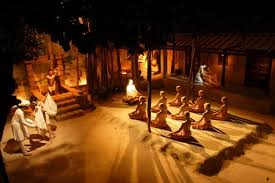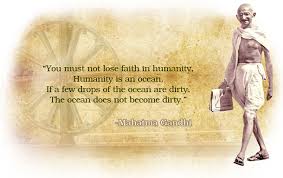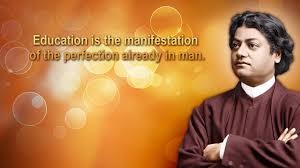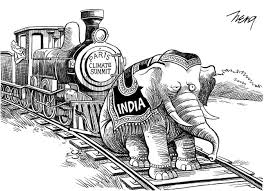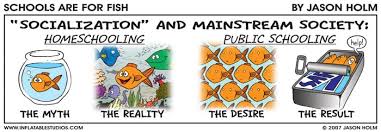Dr. V.K.Maheshwari, M.A(Socio, Phil) B.Sc. M. Ed, Ph.D
Former Principal, K.L.D.A.V.(P.G) College, Roorkee, India
From the Vedic age downwards the main conception of education of the Indians has been that it is a source of illumination that gives a correct lead in the various spheres of life.The history of ancient Indian education extends over several centuries, so we naturally come across different types of educational organisations in different ages. In the pre-historic period down to about 1000 B. C. the family was the only educational agency both for the literary and professional education .
As education began to become more and more complex and exacting, the specialist came into the field in the form of the private teacher, it continued to be in its sole and undisputed possession till organised educational institutions came into existence in connection with the Buddhist monasteries. In a few centuries, Hinduism copied the Buddhist example and organised its own temple colleges. Monastic universities and temple colleges were however confined to some famous centres of learning; private teachers still continued to be the main stay of the educational system.
Private teachers:
In the ancient period, the followers of different Vedas had no doubt formed their own literary organisations like the Parishads, and the Chararias, but curiously enough these do not seem to have ever made any concerted effort to form educational institutions, which would hand down to the next generation the literature of which they were the custodians. Private teachers have all along been the sheet anchor of the educational system. This need not cause any surprise. The sacred texts required each Brahmana to devote himself to the cause of teaching in his individual capacity, and the injunction was of very largely followed. Each learned Brahmana was thus an educational institution by himself. The Parishads or councils of famous scholars of the different centres or tribes therefore did not feel it necessary to organise public educational institutions- of the modern type, worked with the co-operation and assistance of a number of teachers. Famous capitals and holy places like Taxila and Benares were centres of a number of famous scholars, but they also imparted education in their individual capacity, and did not as a rule combine to form any colleges. If the number of pupils under any teacher happened to be large, he would either engage an assistant teacher, or assign part of his work to brilliant advanced students. Neither step however would change the individual character of the school.
Rise of Organised Institutions :
Corporate educational institutions were first evolved in ancient India in connection with Buddhist monasteries. The Buddha had emphasised the vital importance of imparting systematic instructions to novices, who were required to be educated for ten years, not only in spiritual practices, but also in the study of the sacred literature, which required a good grounding in Pali and Sanskrit, the logic and metaphysics.
When Buddhist monasteries developed into big establishments from the time of Asoka onwards, they naturally developed into centres of education. They were the ‘counter parts of Hindu Gurukulas, where the Guru was the head, not of a family but of a monastery. At first they were intended for monks and nuns only, but later on for the lay population as well ; for it was soon discovered that the best way of getting a good supply of novices of the right type and of propagating the religion among the masses was to mould the plain minds of the young generation by taking up its education. Hindu educational institutions, so far known, are all later than the time of the Nalanda University (c. 400A.D.). It is probable that the starting of organised public institutions for education may have been suggested to Hindus by the transformation of Buddhist monasteries into colleges and Universities. Temple colleges started by Hindus were a natural reaction to the Buddhist monastic Universities.
Organisation of Buddhist Universities:
We can get a fairly good idea of the organisation of Buddhist Universities from the accounts handed down to us about Nalanda and Vikramsiila, which were typical of their class. The whole establishment used to be in charge of a famous abbot (bhikshu). He was usually elected by the members of the Sangha. Character, scholarship and seniority were the factors usually taken into consideration. In the 9th century, a monk-scholar from near Jalalabad, who was on a pilgrimage to Bihar, was elected to be the principal of the University . This would show that local
(It is interesting to note that in Europe also from about the 8th to the llth century A. D. education was centered in monasteries. The causes were somewhat similar. Monks were required to read; so they had to be taught. They must have books and they must in turn teach novices to read and copy manuscripts. Hence arose monastic schools. After the closure of all the pagan schools by Justinian’s decree in 529 A. D., monasteries became the sole schools for teaching. “They offered the only professional training, they were the only Universities of research ; they alone served as publishing houses for the multiplication of books ; they were the only libraries for the preservation of learning ; they produced the only scholars. It was not till the llth century that there was any education to speak of outside monastic schools, and not till the 13th century that there occurred marked changes in the character of education given in any institution ; until then all these schools were taught by monks.” Monroe, A Textbook, pp. 255-261. I. A. t XVII, p. 307, )
or provincial jealousies did not influence the election in any way. The abbot-principal used to be assisted by two councils, one academic and the other administrative. The academic council used to regulate admissions, determine courses and assign work to different teachers. In later times when the granting of diplomas was introduced at Vikramasila, it must have arranged for the holding of examinations as well. He was also in charge of the library and its duties in this connection were onerous. In the pre-press days, libraries were not only store houses of books but also their publishers. They had to take steps to renew their own worn out manuscripts and to meet the constant demand of the outside public for copies of books in their possession. . The copying work was to some extent done by the monk teachers and pupils, but clerks also had to be engaged to cope with it. The administrative council was in charge of the general administration and finance. Construction and repairs of buildings, distribution of food, clothes and medicine, allotment of rooms in hostels, and assignment of monastic work fell within its purview. Above all, it was in charge of finances and used to take steps to realise the revenues of the estates given as endowments to the Institution. This work must have been fairly exacting and complicated in a big University like Nalanda, possessing a hundred or two hundred villages. Steps had to be taken to lease out the fields, to collect the corn due and to store and distribute it properly at the right time. Large staff must have been employed for the work.
Organisation of Temple Colleges:
South Indian inscriptions give us a vivid picture about the functioning of the temple colleges flourishing there, but throw very little light on their internal organisation. It would appear that they were probably administered by the temple sub-committee of the village council, within whose jurisdiction they fell. It was this sub-committee which administered the estates given as endowments and appointed the teachers of the institution. What subjects were to be taught and how many seats were to be reserved for each of them may have been settled by the temple committee in consultation with the views of the head of the institution. The latter was in charge of the internal administration. He supervised over the boarding houses, allotted seats lo students, appointed servants for the messes and arranged for the supply of provisions. In some places even hospital arrangement was made for the need of students falling- ill. The distribution of the teaching work, the supervision of the library and the maintenance of discipline also fell within the jurisdiction of the head of the Institution.
School and College Building:
There is however no information as to what arrangements were made in these institutions for the housing of classes and the lodging of students. In fair weather the classes must have been held under the shades of trees; in the rainy season, some kind of humble tenements must have been found indispensable both for teaching and residence. As far as organised educational institutions like the Buddhist Universities or Hindu temple colleges are concerned, we have definite evidence to show that they used to provide good, spacious and often imposing buildings for their class rooms and hostels. At Nalanda there were eight big lecture halls and as many as three hundred small class rooms. The college buildings were stately and several storeys in height. The university of Vikramagila also was provided with several lecture halls by the Pala emperors. Similar arrangements must have existed at other famous Buddhist centres of education, Military schools intended for aristocratic families were naturally housed in spacious and imposing buildings. Temple colleges were usually located in spacious halls and apartments adjoining the temples, to which they were attached. As far as private teachers were concerned, they usually held their classes in their own houses. This was not difficult for a well-to-do teacher; for the class usually consisted, as we shall soon see, of not more than 10 to 15 students. Sanskrit teachers of even moderate reputation could however usually succeed in building a small unostentatious building for their school out of subscriptions collected for the purpose in their own Tehsil or Taluka. Teachers with small houses used to repair to an adjoining temple or garden to carry on their classes. This practice prevailed in Benares during the medieval times.
Lodging and Boarding Arrangements:
Well to-do teachers in famous centres of education like Taxila used to arrange for the lodging and boarding of their students in their own houses. It must be remembered in this connection that the number of students reading under one teacher was usually not more than 15 and he could thus arrange for their lodging and boarding. When public educational institutions came into existence, they used to invariably arrange for the lodging and boarding of students in hostels specially built for the purpose. Several such hostels existed at Nalanda, Salotgi and Vikramagila. In these hostels, there were common messes run by the authorities through servants appointed for the purpose. Students’ rooms were sometimes provided with a stone bench to sleep upon and notches for keeping lamps and other sundry things; this arrangement prevailed at .Nalanda as will become clear by a visit to its excavations. In some places, arrangements were also made to offer free clothing and medicines ; some institutions like that at Nalanda in northern India and Malkapuram in southern India used to maintain hospitals for the needs of the ‘sick students . In some places like Salotgi, light also was supplied to students out of special endowments received for the purpose. In Bengal, till quite recent times, teachers of Sanskrit schools used to collect subscriptions from well-to-do people in their districts and build small unpretentious mud houses for the residence of students reading under them. It is quite possible that the same practice may have prevailed in ancient times in those localities which were carrying on the work of education in their own humble way, but had not become famous centres of education like Nalanda or Ennayiram. These boarding houses were under the direct control and management of the teachers under whom the students were working. When however teachers were unable to make such arrangements, students had to shift for themselves. Rich students would often hire their own houses. Poor students would often stay in temple out-houses and subsist by begging.
Payment of Fees:
No Stipulation: Stipulation for fees was vehemently condemned in ancient India. No student could be refused admission even by a private teacher simply because he was too poor to pay any fees. A teacher guilty of this misdemeanour was declared to be unfit to officiate at religious ceremonies and was held to obloquy as a mere trafficker in learning. it was held that the cause of education was a sacred one; every teacher qualified to teach must teach as a matter of duty.
The relations between the teacher and the student should be based upon mutual affection and regard, and not on any mercenary consideration. There is ample evidence to show that this theory was acted upon in all public educational institutions in ancient India. Evidence of indisputable character shows that the Buddhist Universities, temple colleges, Agrahara institutions, and Mathas were all imparting free education to their students. When they used to receive sufficient endowments, they would also arrange to provide free boarding, lodging, clothing and medicine to the students admitted by them. Education therefore was free in a much wider sense in ancient India than is ever dreamt possible in modern times.
( It is interesting to note that there existed a similar prejudice against the charging of fees in ancient Greece for a long time. Neither Socrates nor Plato charged any fees. It was the Sophists who first introduced the custom of offering instructions to any person in any subject he chose, if lie offered sufficient remuneration. The practice was despised by the public opinion in the beginning, but was soon adopted by all educational institutions before the 3rd century B. C. Spencippus, the successor of Plato at the Academy, charged fee from his students. Monroe, A Text book, p. 112 )
Private Teachers and Fees:
It is necessary to note that what has been condemned by the sacred texts is a stipulation for the payment of fees as a condition precedent to admission; they have no objection to teachers accepting voluntary gifts from the guardians of students reading under them. Just as the teacher was exhorted to remember that teaching was his sacred duty, the guardian also was asked to note that no object in the universe, howsoever precious it may be, can be regarded as an adequate fee for even that humble teacher, who teaches a single letter of the alphabet. Smritis resort to this hyperbolic strain because they were anxious that the teacher, who was prevented from charging regular fees, should be in a position to get an adequate living. The exhortation to the guardians was not without its effect. For we find that though in theory the teacher’s honorarium (guru-dakshina) became payable only at the end of education , rich guardians used to pay the whole of it in advance according to their ability . Guardians of
(Yajnavalkya repeatedly refused the offer of a handsome fee on the ground that he had not finished all what he had to teach. Br. Up. IV. 1. Jatakas show that rich persons like merchants and princes used to send the whole amount of school fee in advance when they used to send their sons to Taxila. Bhishma also had paid Drona his honorarinm in advance before he had started the education of the Kauravn princes; Mbh. 1.142.1. The same was done by the father of Nagascna, the preceptor of Menander; Milindapafilia. Vol. 1. 17 )
ordinary means must have found this procedure impracticable and paid the fee by easy instalments, though we have so far got no evidence of this practice prevailing. None who could afford, was permitted to evade payment by the public opinion. It was regarded as a very great disgrace that one should not pay one’s teacher though properly instructed, when one had the ability to pay. When Nagasena, being a monk, naturally expressed his unwillingness to accept the rich and luxurious gifts of his royal pupil, Menander, the latter begged him to change his mind in order to save him from the scandal getting abroad that though properly instructed, he would give nothing in acknowledgment to his teacher (Mil. pan. 1, pp. 134-5). Students whose guardians were really too poor to pay any honorarium were expected to help the teacher in his household work and pay him some honorarium at the end of the course by collecting subscriptions for the purpose. We often come across such students in Jatakas. To refuse their request for subscription was regarded as highly disgraceful.
Payment of fees:
There was no fixed scale of monthly or sessional fees prescribed in ancient India. It was the duty of Brahmanas, who were the custodians of ancient culture and learning, to teach all qualified students free of any charge. If a student was poor, the teacher could not refuse him admission ; he had to teach him in return for personal service and in expectation of some lump sum to be received later, when he had finished his education and was in a position to collect subscription for the purpose. As far as well-to-do persons were concerned, they were expected to pay the maximum they could do to the teacher. Government also was expected to enable the teachers to impart free education by giving them land grants and pensions. It was also expected to give rich endowments to public institutions in order to enable them to offer not only free instruction but also free boarding and lodging. The available evidence shows that this arrangement postured a proper sense of responsibility and worked on the whole quite satisfactorily.
Admission Procedure:
In ancient Indian educational system there were no examinations, diplomas and migration certificates; every student, therefore, who sought admission to a higher course, had to undergo a severe test to prove that he was fit for it. The duty to provide free education that was imposed upon teachers and institutions must also have naturally resulted in making the admission test a stiff one. The test was partly moral and partly intellectual. Morally disqualified students were summarily rejected (Nirukta, II. 4). In ordinary schools dullards were given a trial and advised discontinuance of studies, when it was discovered that they could not improve. In famous centres like Nalanda, where the rush was great, the admission test was very stiff ; only two or three out of, ten could succeed in getting admission .
Both at Nalanda and Vikramasila, there were special professors appointed to the task of regulating admission by testing the calibre, capacity and sincerity of the applicants for admission . Probably similar arrangements existed also in other institutions of higher education. Private teachers would themselves test the capacity of students seeking admission to their schools. At the beginning of Vedic and professional education, some religious rituals also were performed.
The Size of the Class :
The income of the private teacher varied with the number of his students, and we sometimes come across rituals prescribed for getting more students. But the actual number of students reading under one teacher does not seem to have been large. The Jatakas no doubt very often state that the ‘world-renowned’ teachers of Taxila used to have 500 students reading under them ; but this statement seems to be an exaggeration, suggested by the traditional number of disciples usually associated with the Buddha. For all available evidence shows that the strength of a class under one teacher was usually about 15. Nalanda used to have about a thousand teachers for its student population of not more than nine thousand. In the llth century in the Vedic college at Ennayiram, each teacher had only about 20 students under his charge . At Benares during the 17th century, sometimes only four and usually about 12 to 15 students used to work under one teacher . In the 19th century the number of students under one teacher in Sanskrit schools at Nadia varied from 10 to 20 . It therefore seems to be almost certain that the Jataka statement about the teachers at Taxila having 500 students each is an exaggeration. The normal strength of a class was never more than 20.
School Hours:
Curiously enough there is very little information available about the school hours. Smritis are altogether silent upon the point. We should however note that in ancient time press, paper and cheap books were absent ; so home work or home reading was practically impossible. All the work had to be done under the guidance of the teacher or the monitor. Literature often describes the morning time as resounding with the sound of the recitation of students . So there is no doubt that there was a morning session, probably starting at about 7 A.M., when the daily religious duties were over. The morning session continued till about 11 A.M., when both the students and the teachers had to break off for their religious duties and meals. The noon meal was followed by a short rest and the school reassembled at about 2 P. M. and worked for three or four hours. The school period was spent partly in what may be called homework and partly in learning new lessons. The former consisted of committing to memory the texts expounded earlier with the help of one or two copies of the book existing in the school or under the direction of a senior monitor, who was well versed in it. The memorising and revision work was usually done in the morning, and new lessons were taught in the afternoon. Such at any rate was the tradition in the Sanskrit schools of Bengal and Bihar. We must remember in this connection that Brahman teachers were busy in the morning in performing their own religious duties or officiating at religious functions and ceremonies to which they were often invited. The noon session therefore must have been usually devoted to teach new lessons. It is however quite possible that there may have been no hard and fast rules in this connection. If the teachers were free, the morning session also may have been devoted to new lessons. In organised colleges which engaged full time teachers, this may have been generally the case.
No One Time School :
It must have been noticed that there was no one time school in ancient India. One time school, either in the morning or in the afternoon, would not have suited the religious habits of the age, which necessitated the performance of religious duties both in the morning and the noon. It has to be noted that most of the teachers of higher education belonged to the priestly class. Students usually lived with their teachers or very near their houses or in small villages ; so attendance at the school two times a day did not cause any physical inconvenience similar to what is felt by the children living in big cities and attending schools situated far off. Nor was it necessary to keep either morning or noon free to students for their home work ;. for no home work was possible. Even the richest student in ancient times could not afford to have about half the number of books and exercises, which the poorest student is compelled to procure in the modern age.
Night Classes :
Poor students who could not pay any honorarium to the teacher had to do a good deal of the household work for him. They naturally could not be present throughout school hours during the day.Teachers used to hold night classes for their convenience. There is definite evidence to show that this practice prevailed at Taxila ; probably it obtained in other places also.
College Session : Pre-historic Period :
The Upakarma and Utsarjana rituals show that the college session could not have lasted for more than five or six months . It began sometime in August and ended some- time in February. Such was the case in prehistoric times when Vedic hymns only formed the main subject of study. When however the sacred literature became more extensive and new branches of learning were developed like grammar, philology, astronomy, philosophy and sacred law (Dharmasastra), the short session of six months was found to be inadequate and studies began to be prosecuted throughout the year.
College Session : Later Times:
There is ample evidence to show that in later times, though the Utsarjana ceremony, which marked the suspension of the Vedic studies, was performed in February, the college work went on uninterrupted. Manu, for instance, states that inspite of the Utsarjana ceremony, the study of the Vedas and Vedangas should be continued throughout the year(IV.98). College terms followed by fairly long vacations, with which we are now familiar, seem to have been altogether unknown in ancient India since about the 7th century B.C. Transport difficulties were immense and students from Rajagriha (near Patna) and Benares going to distant places like Taxila used to return home only when the whole course was over. They therefore continued their education throughout the year, and had no long vacations like those we have at present. The present day custodians of Sanskrit learning are unaware of any tradition about long vacations obtaining in the past. If a student had some urgent work, he could take leave and go home to attend to it. Those whose homes were very near may have occasionally gone home on some of the usual holidays. But the entire teaching work does not seem to have been suspended for any part of the year. Work also was not much disturbed by different students going home at different times; for generally speaking each student was taught separately.
The List of Holidays :
We come across a systematic list of holidays only in post-Vedic literature. But many of these go back to very early times. Regular holidays were four in the month at an interval of a week are the new and full moon days and the eighth day of each fortnight. Sympathetic interest with the inhabitants of the locality was also responsible for the stopping of the work sometimes, when the peace of the settlement was disturbed by an invasion or by incursions of robbers or cattle-lifters, or when the king or a Brahmana of the village had met with an accident or died.” Arrival of distinguished guests led to the suspension of studies; for a good deal of the time and energy of both the teacher and the students had to be devoted to make the guests comfortable.
Holidays for Bad Weather, etc :
Abnormal weather conditions giving rise to untimely clouds, thunder, remarrying or having recourse to Niyoga also suggests that there used to exist no long vacations when married students could go home and stay for sometime with their families. heavy showers, frost, dust-storms etc. were also regarded as sufficient causes to suspend studies. Holidays for these causes seem to go back to hoary antiquity, when students and teachers lived in humble cottages and were engaged in agricultural pursuits. It must be further remembered that the teaching and learning of the Vedic hymns in the manner in which it is done traditionally was physically impossible when a storm or lightning was thundering abroad. In later times when teachers were well-to-do men living in towns and villages and not directly concerned with active agricultural pursuks, it is doubtful if studies were suspended when there was a dust-storm or frost. When the howling of jackals, crying of wolfs, screeching of owls, braying of donkeys or barking of dogs was heard, teaching was temporarily stopped, partly, on account of superstitious beliefs and partly due to the notion that the Vedic study was so sacred an affair that it could be prosecuted only under ideally pure circumstances. It was apprehended that gods would become angry if the sanctity of the Vedas was defiled by their being studied on such occasions.
Curtailment of Holidays :
In course, of time most of the holidays were abolished. Curriculum was getting heavier and some reasons had to be found for departing from the old tradition. Some authorities, therefore, started the theory that prohibition of studies under abnormal weather condition referred only to loud recitations ; silent reading was not intended to be interdicted. Others held that non-Vedic works could be studied on the official holidays. It would appear that in later times discretion was given to different institutions as to what holidays should be permitted by them to their students. Holidays allowed to the youngsters were to be more numerous than those to be allowed to advanced students. This was certainly a very sound educational principle. In the case of serious students, apart from the four monthly holidays, studies seem to have been suspended since early times only when they themselves or the place they were studying was impure.
Organisation of Courses :
The modern reader will be surprised to learn that in ancient India there were no central bodies like the senates or boards of studies to prescribe a clear cut course of a definite duration in different subjects. This was a natural consequence of the circumstance that education was mostly imparted by private teachers : they did not belong to any institution, nor were they controlled by any government. There was also another reason for this phenomenon. Ancient Indians regarded knowledge as unlimited and no period that one could spend for its acquisition was regarded as adequate for the purpose. The duration and contents of the course were therefore largely determined by the will, capacity and convenience of the student. Some students who wanted to get an all-round mastery used to read for as many as 25 or 30 years. Others who were home sick or were content with a superficial knowledge, used to return home in six or even three years. Intelligent students, who could master the course in a shorter time, were allowed to return as soon as their studies were over.
Normal Duration of the Course:
The course of higher education usually began with Upanayana at about the age of ten and extended over about 12 years The tradition is quite definite about the Vedic- course extending over that period. This period was necessary for the study of one Veda along with its subsidiary branches.
The duration of the courses of non-Vedic studies like philology, logic, philosophy, poetics, DharmaSastra, etc. is not definitely known. The students of these subjects had to study a few Vedic hymns, necessary for their religious duties, and a good deal of grammar in order to get the facility for understanding works in advanced Sanskrit prescribed for their courses. The full grammar course extended over ten years in the 7th century A. D.; but the students of poetics, philosophy or sacred law successive lives in attempting to master all the Vedas. On learning that ho proposed to spend his fourth life also for the same purpose, Indra appeared before him, showed him three hillocks of corn, and taking a handful from each, told him that the three Vcdas were infinite and what he had learnt of them in three lives bore the same proportion to what remained to be mastered as his three handfuls bore to the hills of corn lying in front.
Sanskrit literature is full of sayings to the effect that knowledge is infinite arid cannot be mastered in one’s life: (Dharmagastra), may have finished their grammar course in five or six years and devoted about ten years for getting a mastery in the subject of their choice. A person who wanted to be regarded as cultured and well educated had thus to spend about 15 or 16 years for his education, subsequent to the time of his Upanayana at about the age of eight or nine. Usually he could finish his education and become an expert in one particular branch at about the age of 24, which was regarded as the ideal age for marriage.
Longer course for special experts :
Those however who wanted to become special experts or get the mastery of several Vedas or wanted to specialise in more than one branch of knowledge had to devote a much longer period for their studies. They had to spend another 10 or 12 years and their studentship continued to the age of 35 or 40. Megasthenes and Colebrooke refer to such students, when they both refer to scholars prosecuting their studies even at the age of 37. Society however did not approve of the devotion of so great a part of life to the cause of studies, if the person eventually intended to marry. One authority states that a person ought to be married in the prime of his life; to postpone marriage to the age of 35 or 40 would be a folly. Specialisation had come into field early ; it was not necessary for a person to master several Vedas or several branches of knowledge. It was feared that if this was indiscriminately encouraged, some students would be tempted to prolong their education indefinitely, especially since society used to provide them with free boarding and lodging. The case of teachers and professors was different; they had already become earning and useful members of society. They were expected to be life-long students and acquire efficiency in several branches.
Life-long student hood:
Actuated by spiritual motives, some persons in ancient India used to observe life-long celibacy and devote their time entirely to religion and education. They were known as Naisthika Brahmacharins. Their primary motive was spiritual salvation, but it was to be achieved not by penance or meditation, but by the dedication of a life of chastity to the cause of the sacred lore. Unmoved by praise or reproach, they carried on their work, without mixing much with the mundane world and its affairs. Their sole concern was a thorough acquisition of knowledge.
“Forgetting fatigue’, says Yuan Chwang, ‘they expatiate in arts and sciences; seeking for wisdom, .they count not 1000 U (roughly equal to 200 miles) as a long journey. Though their family may be in affluent circumstances, such men make up their minds to be like vagrants and get their food by begging, as they go about. With them there is honour in knowing the truth and there is no disgrace in being destitute’ (1.160-1). Smritis require a Naisthika Brahmachari to serve his teacher throughout his life; in actual practice however they used to establish new centres of education after some time. Famous teachers like Kanva and Divakarasena (of the Harshacharit) were such Naishthika Brahmacharis. This ideal of Naishthika Brahmacharya, which is peculiar to India, enabled her to make striking progress in learning and philosophy.
References:
Radha Kumud Mookerji :Ancient Indian Education -
A. S. Altekar Education in Ancient India -
Swami Tattwananda: Ancient Indian Culture at a Glance -
Benoy Kumar Sarkar: Creative India
Gurumurthy. S: Education in South India
Radha Kumud Mookerji : Hindu Civilization –

